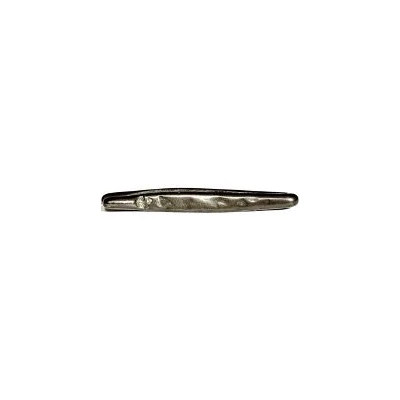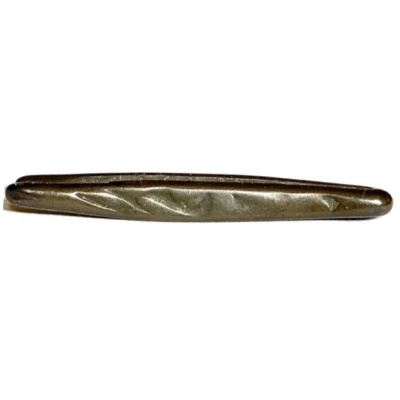


Larin / Tawilah ND
| Billon | 2.85 g | - |
| Issuer | Bani Khalid Emirate (Saudi Arabia) |
|---|---|
| Type | Standard circulation coin |
| Value | Tawilah (1) |
| Currency | Tawilah |
| Composition | Billon |
| Weight | 2.85 g |
| Size | 35 mm |
| Shape | Other |
| Demonetized | Yes |
| Updated | 2024-10-07 |
| Numista | N#378334 |
|---|---|
| Rarity index | 97% |
Reverse
Illegible inscription. It could modelled on an Ottoman coin design and so could be the side inscribed with the sultan's title, 'Sultanü'l-berreyn ve hakanü'l-bahreyn', 'sultan of the two lands and lord of the two seas'.
Edge
Folded larin
Comment
This rather enigmatic coin is the subject of some debate. It has been identified by Mitchiner and Walker as an Ottoman coin from the early eighteenth century, from Al-Hasa / Lahsa Province in today's Saudi Arabia. However, the Ottomans lost control of this region to a new local power, the Bani Khalid Emirate, in 1670, and so if this is an eighteenth century coin it could not be an Ottoman one. Van Laere's research provides the most likely answer, in that these are a local issue of the Bani Khalid Emirate, possibly using an Ottoman coin die. They were produced in the eighteenth and early nineteenth centuries, and were in circulation when the Ottoman regained control of the area in the 1870s. They are clearly related to the wider Indian Ocean larin minted in Safavid Iran, Ottoman Iraq, the Sultanate of Bijapur, the Kingdom of Kandy, and the Maldives, but were produced when the larin was being replaced with foreign trade coins. They should properly be called 'tawilah', the local name. There is still much to learn about these interesting coins.Interesting fact
The Larin / Tawilah ND coin from Bani Khalid Emirate (Saudi Arabia) made of Billon weighing 2.85g has a unique feature. It has a distinctive shape, known as a "heel-shaped" or "camel-shaped" coin, which sets it apart from other coins. The design of the coin is said to have been inspired by the shape of a camel's foot, which was a common motif in ancient Arabian currency. This unique shape not only makes the coin visually distinctive but also serves as a symbol of the region's rich cultural heritage.